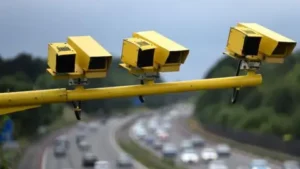Technology, particularly artificial intelligence (AI), is increasingly taking center stage in sports officiating, a fact that has led to numerous discussions about its trustworthiness, especially across a platform as prestigious and tradition-rich as Wimbledon. The narrative posted by Zoe Kleinman, the BBC’s technology editor, delves deeply into this topic, shedding light on the friction between humans and machines, as highlighted by a recent incident involving players Sonay Kartal and Anastasia Pavlyuchenkova.
On a particular Sunday afternoon, the integrity of a key match moment hinged on an electronic line-calling system that inexplicably failed to signal a crucial error. When Kartal’s long backhand shot was called in, both Pavlyuchenkova and the chair umpire believed it had landed out. Confounding everyone involved, the electronic system remained silent, leading to the decision that the point would be replayed. This unfortunate twist left Pavlyuchenkova feeling as if the match was “stolen” from her, raising questions about both the technology and the fairness of decisions influenced by it. Ultimately, it was later discovered that a simple oversight, where someone had accidentally turned the line judge off, triggered this confusion—a situation that proved detrimental to the player’s experience.
While tennis fans cherish the traditional aspects of the game, like strawberries and champagne, there is a growing sentiment that technology should not sully these customs. Former tennis icon John McEnroe often thrived on the drama that human errors brought to the game. Conversely, younger players, including Emma Raducanu, have openly voiced their disappointment regarding technology’s intervention in match decisions, suggesting a reluctance to wholly embrace this modern era of sport. Notably, the advocacy for technology comes from different quarters, with former champion Pat Cash asserting that electronic line calling is generally more reliable than human judgment.
The British firm Hawk-Eye’s Electronic Line-Calling (ELC) system employs a combination of twelve cameras and real-time data analysis facilitated by artificial intelligence, intending to enhance accuracy in line calls. It is managed by a team of fifty operators and designated to replace human line judges; thus, ideally, it should reduce error rates significantly. While CEO Sally Bolton of the All England Lawn Tennis Club maintains confidence in the technology, the recent incident has highlighted the need for enhancements in the usability of such systems.
As the debate continues, the article invokes thoughts from Professor Gina Neff of Cambridge University, who articulates that the overarching issue isn’t merely whether machines excel over humans in decision-making; rather, it’s the human context in rules and fairness that algorithm-based systems struggle to capture. Humans possess the ability to interpret the nuances of fairness within sporting contexts better than machines can, as the latter operate strictly within programmed parameters. This complicates the acceptance of AI in such human-centric environments.
Furthermore, the concept of “responsible” AI underscores the necessity for human oversight to ensure that these systems operate safely and fairly. With previous mishaps, such as the infamous VAR blunders in football, public trust wades. The lack of transparency about technology’s operation has created a sense of agency loss for many fans and players alike, making them wary of its application.
Despite data demonstrating fewer accidents caused by autonomous vehicles compared to human drivers, a considerable number of individuals express unease about riding in them, highlighting a broader uneasiness surrounding technology’s rapid evolution. Azeem Azhar elaborates on this anxiety, explaining how swiftly changing tech dynamics alter long-held beliefs and frameworks of understanding, causing discomfort among users.
The heart of the conversation on technology in sports revolves around the quest for perfection. As sports journalists like Bill Elliott assert, leveraging technology aiming for flawless outcomes may lead to a loss of authenticity and excitement that human errors traditionally contribute to. This dynamic, he suggests, creates a paradox where the pursuit of perfection inadvertently dulls the thrills that sporting events are known for.
In conclusion, the relationship between technology and sports officiating remains complex. While advancements promise precise and fair decisions, they simultaneously challenge long-standing traditions that define the soul of competitive sports. As the dialogue evolves, finding a balance that satisfies both the accuracy technology offers and the human elements that maintain the sport’s charm is essential.











